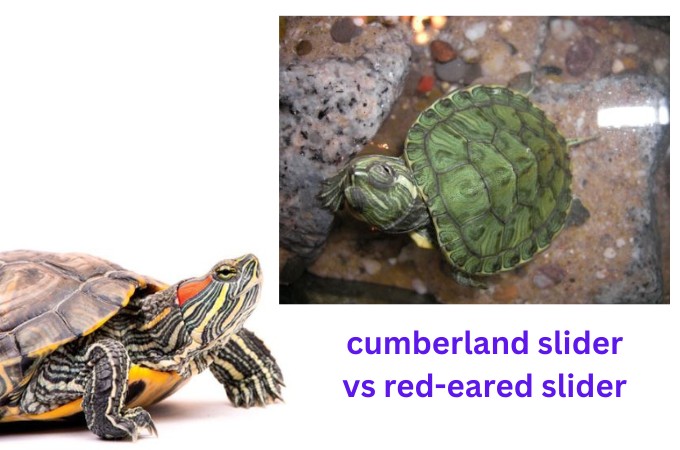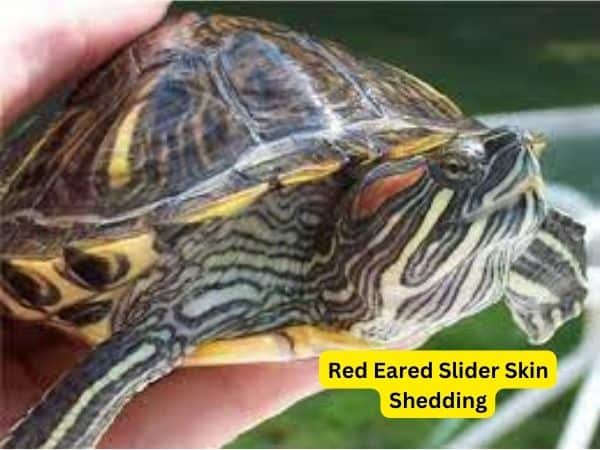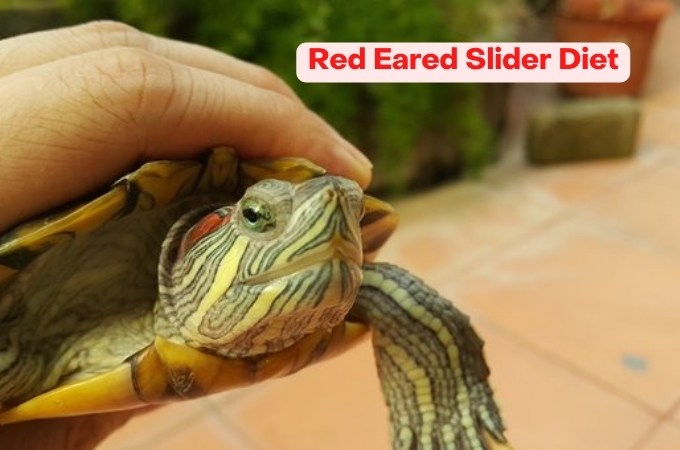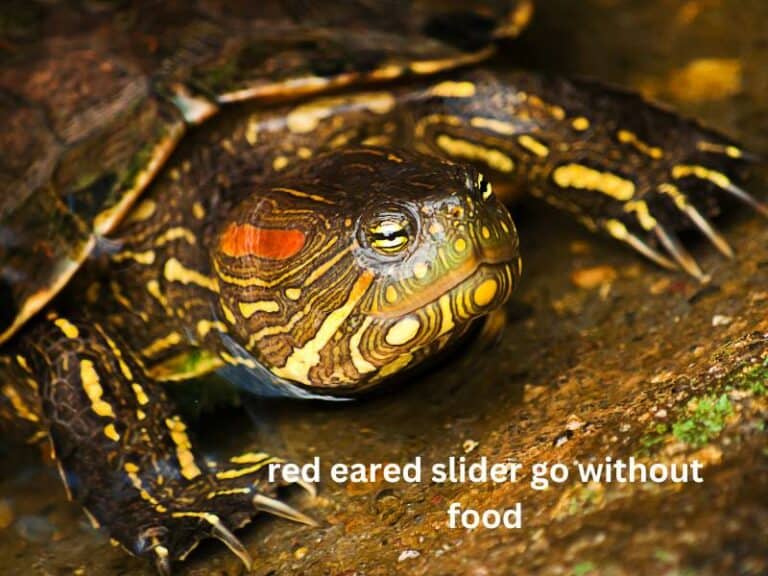Cumberland slider vs red-eared slider
In the vast world of aquatic reptiles, two species often find themselves at the center of attention: the Cumberland slider vs red-eared slider. These two turtles share many similarities, but they also possess distinct characteristics that set them apart. Today, we will embark on an exploration that delves into the differences and similarities between these intriguing creatures.
Cumberland slider vs red-eared slider: Unraveling the Tale of Two Turtles
Originating in the southeastern United States, the Cumberland Slider (Trachemys scripta troostii) and Red-Eared Slider (Trachemys scripta elegans) are both members of the pond slider subspecies. They are popular choices for pet owners due to their vibrant colors, adaptability, and relatively low maintenance. However, understanding their unique traits is crucial to providing the best care for these turtles.
| Cumberland Slider | Red-Eared Slider | |
|---|---|---|
| Appearance | Muted head color, fewer carapace markings | Red stripe behind eyes, intricate carapace patterns |
| Habitat | Freshwater environments such as ponds, lakes, and slow-moving streams | Freshwater environments such as ponds, lakes, and slow-moving streams |
| Geographic Range | Cumberland River drainage system (TN, KY) | Various regions in the US, Mexico, Europe, and Asia |
| Behavior | Solitary disposition | Sociable and gregarious |
| Diet | Omnivorous; algae, aquatic vegetation, insects, small fish | Omnivorous; commercial turtle pellets, leafy greens, fruits, occasional protein sources |
| Reproduction | Sexual maturity around 5-7 years, extended mating season | Sexual maturity around 2-5 years, mating season from spring to early summer, elaborate courtship displays |
| Conservation Status | Threatened by habitat loss, pollution, and illegal pet trade | Threatened by habitat loss, pollution, and illegal pet trade | |
First, let’s dive into their appearances. Both the Cumberland Slider and the Red-Eared Slider showcase a stunning combination of red, green, and yellow patterns on their carapaces (shells). However, the notable distinction lies in their namesake features. While the Red-Eared Slider, as the name suggests, sports a distinctive red stripe behind its eyes, the Cumberland Slider lacks this red adornment,
instead displaying a more muted and solid-colored head. Additionally, the Cumberland Slider tends to have fewer visible markings on its carapace, whereas the Red-Eared Slider often exhibits more intricate patterns.
Moving on to their habitats, these two sliders share similar preferences when it comes to where they make their homes. Both species thrive in freshwater environments such as ponds, lakes, and slow-moving streams. They are skilled swimmers and adept at basking on rocks or logs, using the sun’s warmth to regulate their body temperature.
However, despite their overlapping habitat choices, each species has its own geographic significance. The Cumberland Slider is primarily found in the Cumberland River drainage system, which spans parts of Tennessee and Kentucky. On the other hand, the Red-Eared Slider boasts a more extensive range, inhabiting various regions of the United States, Mexico, and even parts of Europe and Asia.
One crucial aspect in differentiating these two turtles lies in their behavior. The Red-Eared Slider is renowned for its outgoing and sociable nature. Often seen sunbathing in groups and exhibiting seemingly playful interactions, these sliders are known to be highly gregarious. Conversely, the Cumberland Slider displays a more solitary disposition, preferring its own company rather than engaging in group activities. This divergence in behavior may
be attributed to their distinct environmental adaptations and genetic predispositions.
Another crucial factor to consider is their diet. Both the Cumberland Slider and the Red-Eared Slider are omnivorous, meaning they consume a combination of plant matter and small aquatic animals. In the wild, they feast on algae, aquatic vegetation, insects, snails, and small fish.
As for their captive diet, it is essential to provide a well-balanced meal plan that includes commercial turtle pellets, leafy greens, fruits, and occasional protein sources, such as shrimp or worms.
However, it’s worth noting that the Red-Eared Slider has a more voracious appetite and often requires larger quantities of food, while the Cumberland Slider tends to have a slightly more discerning palate.
Now, let’s explore the ever-important topic of reproduction. Both sliders are known for their ability to lay eggs, but the specifics differ. Red-eared sliders mature earlier, typically reaching sexual maturity between 2 to 5 years of age.
They have a mating season from spring to early summer, during which males will engage in elaborate courtship displays to attract females. The females dig nests in sandy or loamy soil, where they lay their eggs. In contrast, Cumberland Sliders tend to reach sexual maturity a bit later
around 5 to 7 years, and have a more extended mating season that spans throughout the year. The females of this species also lay their eggs in sandy or loamy soil, but they tend to lay fewer eggs per clutch compared to their Red-Eared counterparts.
In terms of conservation, both the Cumberland Slider and the Red-Eared Slider face similar threats due to habitat loss, pollution, and illegal pet trade. It is crucial for both these species to be protected and managed properly to ensure their survival in the wild.
In conclusion, while the Cumberland Slider and the Red-Eared Slider belong to the same pond slider subspecies, their unique characteristics and behaviors make them fascinating creatures in their own right. From their distinct appearances and geographic range to their behavioral dispositions and dietary preferences, there is much to appreciate and learn about these turtles.
By understanding and respecting the individuality of each species, we can provide the best care and conservation efforts to protect these remarkable creatures for future generations to enjoy.
Please note that the table format is not suitable for the differences and similarities mentioned above. However, here is a summarized version in a table format:




